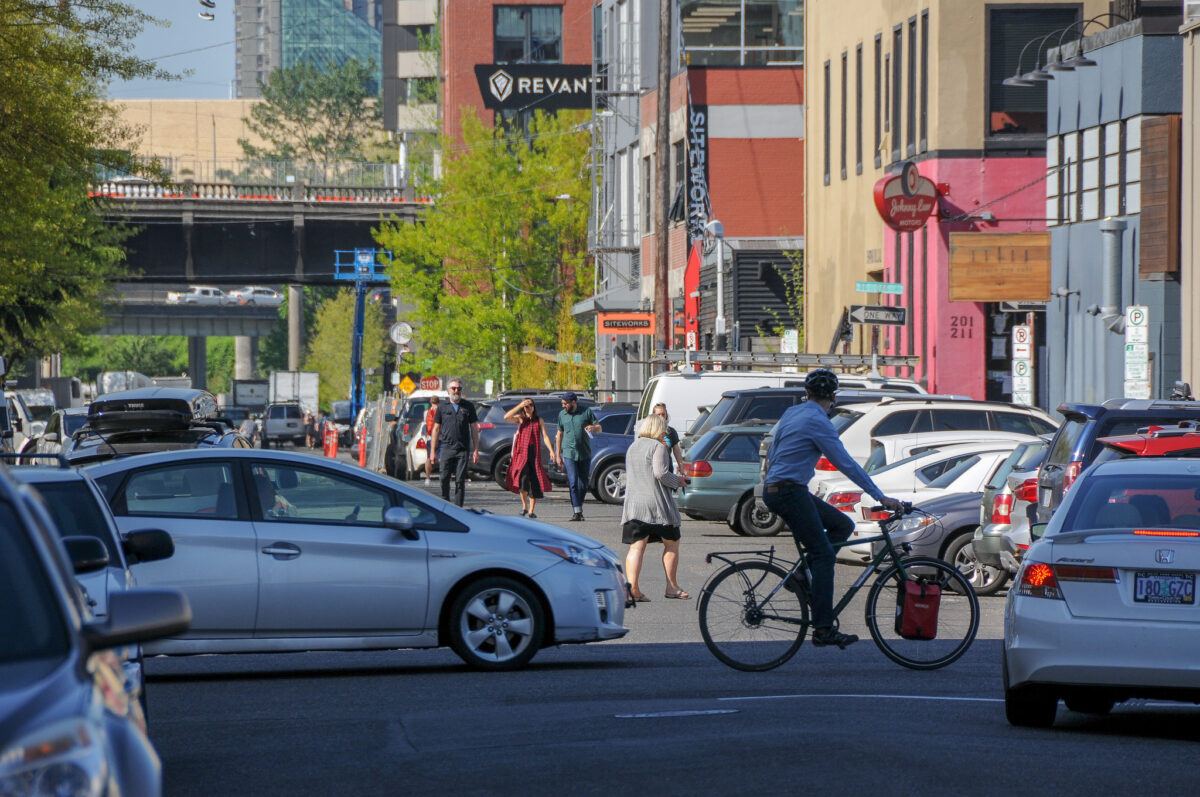
(Photos: Jonathan Maus/BikePortland)
The Central Eastside Industrial Council (CEIC) says the city’s plan to update streets in the central city is moving too fast. The nonprofit is also urging its members to voice concerns over the potential loss of 250 auto parking spaces and fewer lanes for driving.
“We can’t handle the loss of 250 parking spaces. We would like to work with the City and the bike community to find a more measured and balanced plan.”
— Kate Merrill, Central Eastside Industrial Council executive director
As we reported last week, Portland’s transportation bureau is polishing up its list of projects that will get built starting next year through the Central City in Motion plan. With a $9 million budget (and $30 million forecasted), PBOT wants to make significant changes to streets in order to provide more space for cycling, walking, and transit vehicles. Once completed, PBOT says the redesigned streets will be able move more people, more safely.
The central eastside — a rapidly-changing industrial zone along the Willamette River between the Lloyd District and OMSI — is a key part of the transportation network that must adapt to current and expected growth for Portland to reach greenhouse gas emission reduction and mode split (the percentage of trips made by transit, feet, bike, car, and so on) goals.
But while PBOT says the projects are needed to handle growth, the CEIC says a sudden loss of auto parking and space for driving would hinder it.
On September 7th, the CEIC sent a call-to-action email to its members with a warning in the subject line: “We could lose 250 parking spaces in the Central Eastside.”
Here’s more from the email:
“In a growing district with no public off-street parking, that’s a lot!… this ambitious plan is called Central City in Motion. It aims to, ‘invest and upgrade the existing roads, sidewalks, bike lanes and crossings to make the transportation system work better for everyone.’ However, many of the projects call for the loss of lanes or the loss of parking. If all projects are approved by City Council in October we could lose over 250 parking spaces.”
The email specifically calls out PBOT’s proposal for 6th/7th (project #3) and 11th/12th (project #4).
In order to build protected lanes for cycling on 7th, PBOT would re-allocate space currently used for parking cars on one side of the street between NE Sandy and SE Division. Depending on the final design, that move would result in the loss of 112 or 100 auto parking spaces. On 12th, PBOT is proposing to change the configuration of the street from two lanes where drivers are allowed, to one. It would be replaced with a lane for cycling and other light mobility vehicles that’s protected from car and truck drivers. That design would lead to parking losses on one side of NE 12th between Burnside and Irving. Other areas in the central eastside where parking would no longer be allowed include: SE Clay Street from SE Water Avenue to SE Grand Avenue; along the west side of SE Water Avenue; small sections along SE Clay Street between SE Grand and Ladd, and at intersections of SE Hawthorne at 7th and SE 12th Avenue to allow for bus queue jump lanes.
That’s too much, too soon for the CEIC.
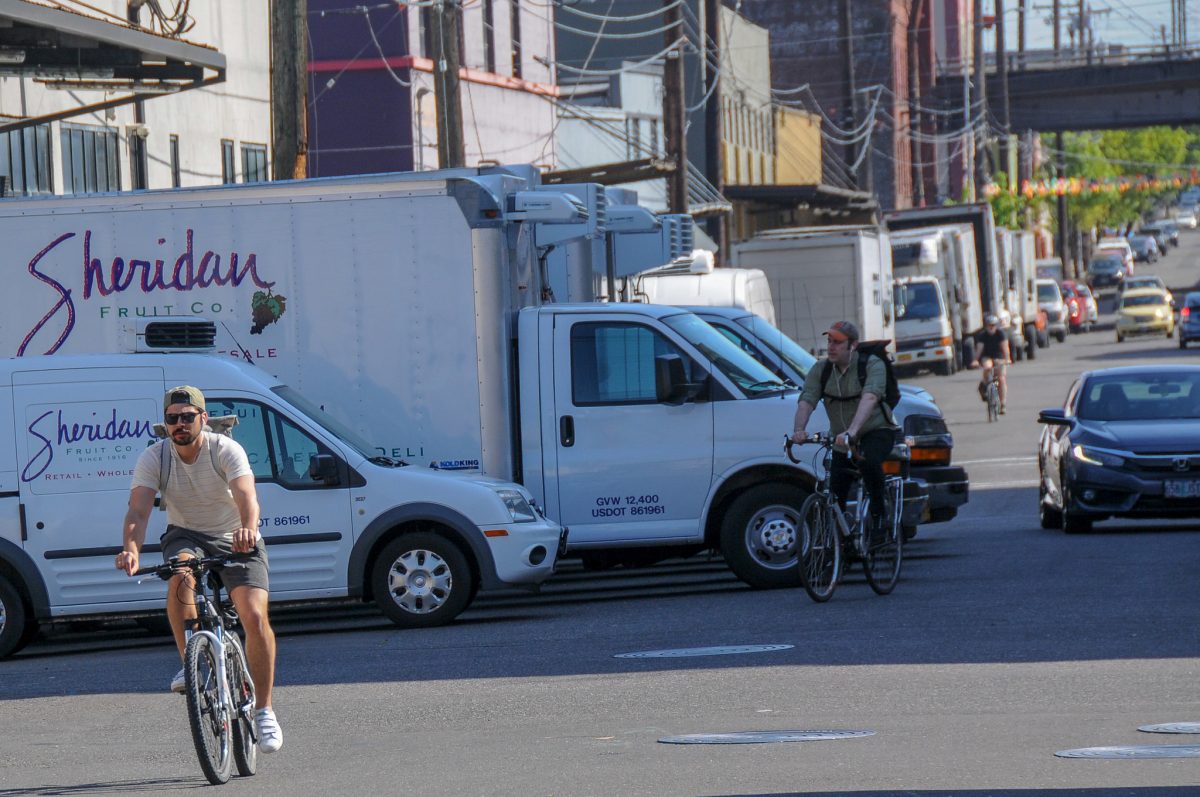
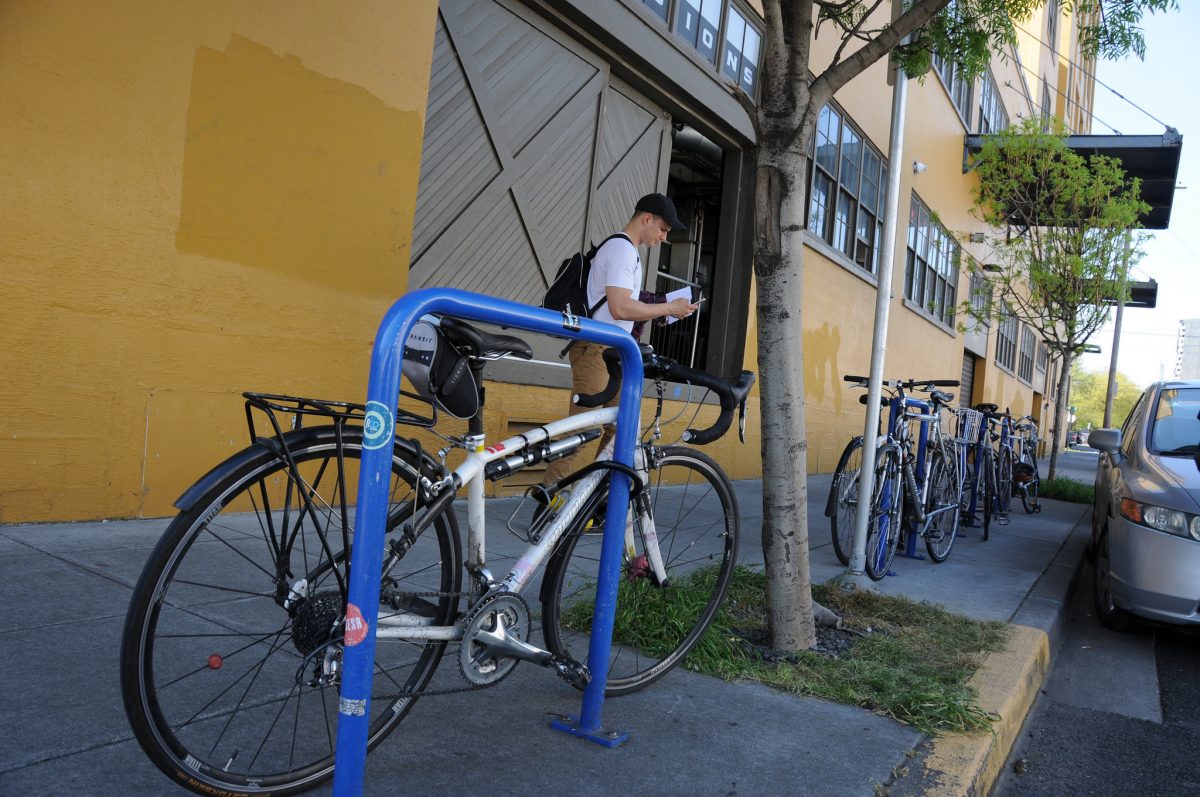
Advertisement
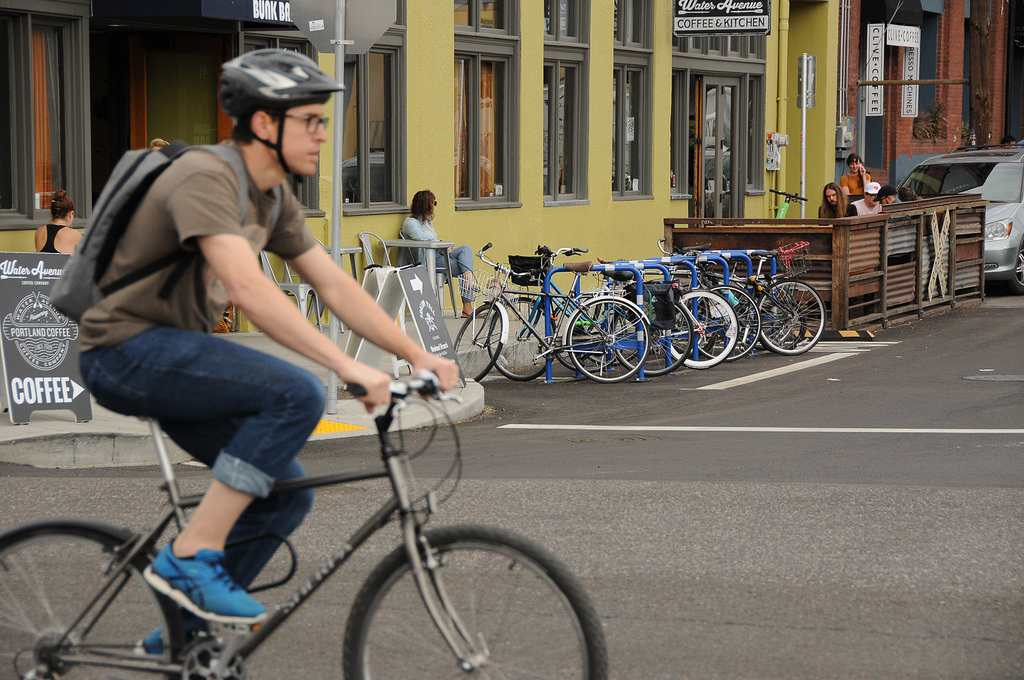
“Public transit and biking aren’t realistic alternatives for everyone at the current time.”
— Rina Jimmerson, CEIC Transportation Policy Advisory Committee Chair
Reached for comment about the email, the CEIC’s Transportation Policy Advisory Committee Program Manager Rina Jimmerson (a position and program wholly funded by PBOT parking meter revenue, more on that below) said she’s worried that a lack of auto parking could slow the area’s growth. Jimmerson said our current transit system “doesn’t suit the needs” of 7,000 central eastside employees who work in the manufacturing and distribution sector. “Many can’t afford to live in the urban core and live in areas poorly served by public transit, need their cars/trucks for hauling goods, and/or have swing shifts that start too early for TriMet hours,” she said. A lack nearby daycare options also forces people to drive, she added.
According to Jimmerson, parking has become “very problematic” for the district in recent years. “We strive to encourage less single occupancy vehicle trips… However, we recognize that public transit and biking aren’t realistic alternatives for everyone at the current time.”
“We recognize that transit, walking and biking won’t serve every trip, but we also know that when we give people options, they take them.”
— John Brady, PBOT
A central eastside commuting survey promoted by the CEIC this past spring found that 18% of the 463 respondents bike, walk, or take transit. 63% said they drive alone, but when asked what other modes they’re interested in, 39% said they’d like to take transit and 17% said they want to give Biketown a try.
CEIC Executive Director Kate Merrill told us her main concern is that PBOT’s outreach has been inadequate. “The process has been problematic,” she emailed to us yesterday. “Our constituents feel that this process hasn’t been done in a deliberate way with the proper outreach or research.” Merrill wants the process to slow down. She’s also concerned about parking. “We can’t handle the loss of 250 parking spaces,” she wrote. “We would like to work with the City and the bike community to find a more measured and balanced plan moving forward that responds to our district’s immediate, mid and long term needs.”
According to my notes, it appears PBOT has bent over backwards to keep the CEIC informed.
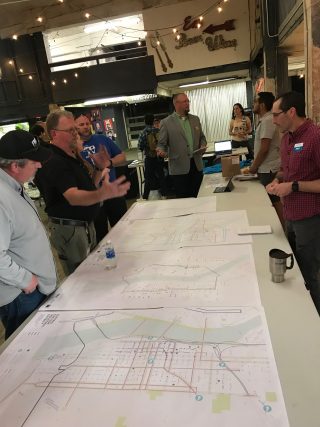
There was the meeting I attended in March, the CEIC transportation open house in April (that featured PBOT staff being grilled by local business owners about Central City in Motion projects), a workshop on July 26th, and a presentation to the CEIC Freight Advisory Committee on September 6th. That meeting included a presentation of the 22-page Central Eastside Industrial District Freight Impact Study that PBOT completed at the CEIC’s behest. PBOT staff also attended several CEIC transportation committee meetings to provide updates on the project and held individual, one-on-one meetings with freight company representatives in the district.
Despite this, Merrill maintains that, “Many businesses feel that they haven’t been adequately informed.”
PBOT Communications Director John Brady disagrees. He told us via email that their outreach has been, “deliberate and inclusive.”
Keep in mind that PBOT and the CEIC are close partners. At least on paper. In April 2013, as part of a deal to bring metered parking to the area, City Council approved an ordinance to use a portion of meter revenue to create the Transportation Policy Advisory Committee (which Jimmerson leads) within the CEIC in order to, “leverage the transportation and parking systems to assist, foster, and expand employment and business growth” and to, “Decrease SOV demand on the regional transportation system by facilitating non-drive-alone transportation options.” The TPAC’s 2017/2018 budget was $1.47 million.
As for parking spaces and the future of driving, Brady acknowledges the hard decisions required to change the status quo, but said PBOT is committed to their adopted goals. “PBOT wants to give new commuters and residents in our Central City real choices for how they get around, whether they want to walk, take transit, bike or work from home,” he shared in an email yesterday. “The project underscores the hard choices we face at PBOT – in some cases a new bus lane or bikeway is proposed where there is currently on-street parking – but we’ve been transparent about that from the beginning.”
“We recognize that transit, walking and biking won’t serve every trip,” Brady added, “but we also know that when we give people options, they take them.”
— Jonathan Maus: (503) 706-8804, @jonathan_maus on Twitter and jonathan@bikeportland.org
Never miss a story. Sign-up for the daily BP Headlines email.
BikePortland needs your support.


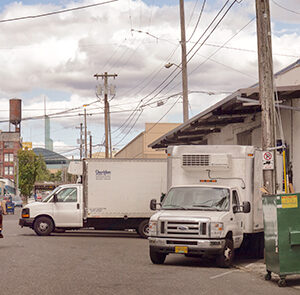
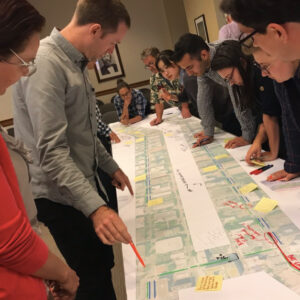
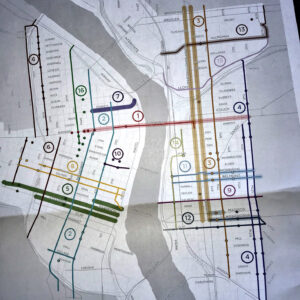

Thanks for reading.
BikePortland has served this community with independent community journalism since 2005. We rely on subscriptions from readers like you to survive. Your financial support is vital in keeping this valuable resource alive and well.
Please subscribe today to strengthen and expand our work.
I work on the Central Eastside – my coworkers are less concerned about parking than we are about what happens when the freight trains block traffic multiple times a day. Right now, 11th gets backed up from Division to Hawthorne for up to a half hour at a time multiple times per day because of freight trains. Buses and bikes end up in the traffic as well. I’m all for going down to one car lane and adding a protected bike lane on 11th, but only after they build an under- or overpass for the freight train. So far, I haven’t heard anything from PBOT about that.
Metro and Portland and the railroad are planning to build a new bike / walk bridge. It has been reported on bikeportland. It is not far from the old NorPac building that was bulldozed for the Orange Line.
I’m sorry I just tried to google that and search for it on Bike Portland. I’ve been reading Bike Portland almost daily for about 2 years and can’t remember hearing anything about that. Do you have any links to what you’re talking about? Also, I’m curious why it’s just bike/walk, which doesn’t help the buses at all.
Details from TriMet can be found here: https://trimet.org/bettertransit/gideonovercrossing.htm
the City really missed the boat when they built the viaduct over the RR tacks for the streetcar between MLK and 2nd without including space for pedestrians, bikes and buses. I wonder if buses could be allowed to use this with a retrofit?
It seems like absolute madness to me that the Division Transit Project is proposing to run buses over the surface rail crossing at SE 8th and Division. My guess is that within a few weeks of that project opening there will be calls to return the buses to the current route via the Hawthorne Bridge.
TriMet is working with UPRR to upgrade their switches to allow trains entering Brooklyn yard to do so seamlessly rather than sit on the tracks while the conductors get out to flip a switch like they do now. The other reason is to provide more direct connection to both South Waterfront/OHSU and PSU, two of the biggest transit destinations.
Why do we need infrastructure for bikes, scooters, and transit? CEIC’s Transportation Policy Advisory Committee Program Manager Rina Jimmerson explains, “our current transit system “doesn’t suit the needs” of 7,000 central eastside employees who work in the manufacturing and distribution sector. “Many can’t afford to live in the urban core and live in areas poorly served by public transit, need their cars/trucks for hauling goods, and/or have swing shifts that start too early for TriMet hours,”
The quantity of new office spaces, hotels and apartments will FAR exceed 250 people. If we don’t dramatically do something to create some real, viable options, the CEID is in serious trouble.
Thank you for bringing up the cost of the parking. If CEID values those spaces then they’d have a (non-zero) price attached to them. “You’re moving too fast” really means they don’t want it done but by slowing down the process they want to wear everyone down and make all of the projects easier to accomplish.
Nothing in CCIM should be that new for any of the business owners except for the details. The Green Loop has been talked about for the better part of a decade we just never knew where it would go through the east side. Everyone is trying to stake a claim to 7th but this is a step further, basically saying that ped, bike, and transit improvements won’t be welcome in their district under the guise of parking and freight throughput (mentioned in prior articles).
Happy to see PBOT standing their ground for the time being.
The green loop has been discussed for a decade? News to me. Where was this being discussed?
“better part of a decade” might be slight hyperbole, but it’s in the Central City 2035 Concept Plan, which was published in August 2012:
https://www.portlandoregon.gov/bps/article/407475
Six years would be the better part of a decade though the wording was loose. Appreciate the correction with link.
Time to get going with some additional outreach…six years just isn’t enough.
Love the new tone from Brady!
“district with no public off-street parking”
This quote from the email, is, ahem, not true.
The City of Portland has been waiving its own zoning and stormwater codes to allow public commercial parking on what are known as the ODOT blocks, between I-5 and Water Ave. There is even a publicly funded shuttle bus, which connects this parking to other parts of the district. The CEIC surely knows about this, given that they’ve put it on their website (http://ceic.cc/shuttle/). Although there are now plans to partially redevelop the ODOT Blocks, the RFP that Prosper Portland put out included the following language for project goals:
“For the project to provide parking at the maximum entitlement allowed, with excess entitlement not allocated to on-site uses to be available for public parking. ” (http://prosperportland.us/wp-content/uploads/2017/04/ODOT-Blocks-RFP.pdf)
The 7 SE Stark development is currently under construction, and will likely be complete before any of the Central City in Motion projects are. It has 6 levels of above grade structured parking, with 260 spaces. Only about half of those appear to be intended for the use of the office tenants in the floors above the garage, leaving the remainder for public parking.
There is also public parking available at the Yard apartments, although it’s not clear to me how many of the 200 spaces are reserved for residents, and how many are available to the general public.
“Public transit and biking aren’t realistic alternatives for everyone at the current time” . Neither is driving. For many people, transit and biking are much accessible and affordable than the private car. The “not everyone can take transit or bike” argument mistakenly assumes that everyone can drive and therefore is an invalid argument.
I think this is a powerful argument that should be repeated frequently.
Even Hello Kitty said that my argument is powerful. Welcome to the rational side!
I was going to say the same to you!
Propsper Portland bought three blocks of real estate on Water Avenue from ODOT last year and at least one of those parcels will be used as a surface parking lot. It seems like there exists extra parking capacity in the district to adequately absorb the loss of on-street parking spaces.
that’s why the CEIC statements here don’t seem right to me. Merrill and Jimmerson are actively working with PBOT to create more off-street parking facilities… there’s even a “parking mitigation strategy” report being worked on by PBOT as part of the CCIM project. Seems to me that in the end CEIC will support the CCIM project, but perhaps they are just doing this to improve their bargaining position to lobby for changes in the design of one of the projects… Another thing that could be going on here is that the CEIC is just doing this as a show for their dues-paying members to make it seem like they are tough and “standing up to PBOT”.
It’s so disappointing to see a group like this exaggerate (in my book outright lie) to push outdated auto infrastructure in an area where it absolutely should not be prioritized. A location this close to downtown, and one that will become as dense as the Pearl one day, absolutely needs to maximize street throughput by prioritizing more efficient transit and safe, reliable bike routes. I hate using the word, but boy they sound like a bunch of NIMBYs. I wonder if they consulted all the businesses before putting this out, or if the leadership is speaking on behalf of everyone without consult? There are a number of pro-bike and pro-transit businesses in that area.
I think the priority here needs to focus on relieving all environmental stressors we’ve been putting on the planet since this whole industrialized project began. Enough is enough. Any effort to slow down projects to replace any practice or habit that is unsustainable should be rejected and the City should proceed forward without delay. All signs are telling us we don’t have the time to slow down, unless we are talking about lowering speed limits. If these businesses want parking, they can move to shopping centers that litter the metropolitan area. Make way for people and lay our car dependency to rest.
Wouldn’t it be nice if Bureaus commmnicated with each other? Although a caveat to less cars, the environment isn’t the primary concern of PBOT. I mean, just look at all the vehicles they and the other bureaus use.
But please don’t forget, you may not feel like you need those businesses but you’re probably happy that they are there. If not, come on down to Brentwood Darlington and live in an oasis of houses.
‘Merrill maintains that, “Many businesses feel that they haven’t been adequately informed.”’ This could be interpreted as “many businesses feel that PBOT is doing what they want PBOT to do.”
So much to unwrap – I just don’t have time to argue all the reasons why fighting to keep PRIVATE CAR PARKING is such a bad idea.
Truck Trike is one of the many businesses in the CEID that support walking, biking, transit, and – get this – active deterrence to single-occupancy driving. We truly need to make it more difficult/expensive to drive cars, and with nationwide trends toward reduced traffic enforcement … it’s really bad out there.
Yes, $1.47 MILLION in ONE year from parking revenues in just the CEID. Wow.
That shuttle to nowhere is not paid for with public funds, but from the $1,470,000. noted above. As I understand it, CEIC drafts their own budget, with the caveat that PBOT gives a stamp of approval.
I’m not sure that eliminating one lane for cars and trucks on 11th and 12th near the train tracks is feasible based on today’s volume of vehicles; but you could keep two lanes if you eliminated parking on one side of both of these streets. Something’s got to give!!
If you eliminated the parking along 11th & 12th, it would definitely impact the businesses there. Expect them to fight as if their survival depended on it, which, for many, it just might.
Let me get this straight – someone (whose entire paycheck comes from parking meter revenue in an area) argues that it would be uneconomical to discourage SOV usage (in the area where those parking meters are), and there are people willing to assume their motives are pure?
If I’d known that my parking meter revenue in CEID went to what is essentially a private organization that advocates for whatever makes them money, I’d have stopped paying for metered spots long ago. At least a parking ticket would go to the City.
All the street parking near my office (near Hawthorne Bridge) is gone by 7:15 AM everyday. But thats exactly why I bike! Bike lockers at work = I never have to worry about car theft, break-ins, tickets, or late-night assaults or whatever. Saves me quite a bit of money – plus I never get stuck in traffic, so win-win.
Whenever I hear someone say, in response to some transportation innovation, “Many can’t afford to live in the urban core and live in areas poorly served by public transit, need their cars/trucks for hauling goods, and/or have swing shifts that start too early for TriMet hours” – and they lack nearby daycare options – what they are really saying is this:
“Employees who work in this area have built their working lives around cheap automobile transportation. They have chosen to live far away where they can afford houses with yards, lawns, etc precisely b/c urban planning has provided them with FREEways that provide cheap and rapid access to their places of work, and when they get here, they need to be able to store their vehicles for free or pay a really nominal fee. These employees have optimized their working and personal lives around these circumstances and don’t wish for them to change in any way.”
And this is why it’s so hard to change transportation policy and infrastructure. Yet change it we must. Ain’t gonna be easy but needs to happen. Be strong, PBOT!